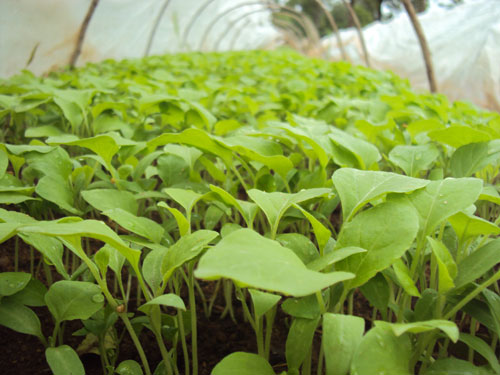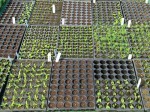Seedling transplant tolerances and germination characteristics
Seedling susceptibility to various climate conditions is important to growers, especially those wanting to venture into new crops. We all know that microclimate is crucial to seedling growth and time to maturity. I think climate is one of the most important aspects that has to be considered when deciding to grow your own seedlings or to outsource this intensive activity.
To present general numbers on seedling susceptibility, time to maturity and hardiness is a big risk as conditions on the farm is unique to each grower, even if they are neighbours. But the table below will give you a good indication of the comparison of various vegetables.
What we have not indicated are the various characteristics of varieties. Be careful to make general assumptions for lettuce for instance. Some varieties are designed to grow optimally in colder conditions and others in warmer conditions. So within varieties there can be significant differences and a good grower will always test at least 3-4 new varieties each year, from the seedling growth stage right up to harvest and quality of yields. Never take seed companies pamphlets to literally. You might have a north facing farm and your neighbor south facing, the difference in terms of growth for seedling germination time can be up to two weeks. That can have a significant effect on your planting schedule throughout the year which again has a huge effect on the time of harvest thus marketing. Careful bookkeeping of germination and time to transplant is crucial and should be done over a period of minimum 3 years to have good data and make a good decision. I have met some growers that keep on trials of even their best seed that they currently use just to test the germination effectiveness, which can decline if the seed company does not apply good practices.
Below table is a good indication and a good start to use as reference when deciding to introduce new crops on the farm or to expand into a new field.
Seedling growth table and tolerances
| Vegetable type | Growth strength | Time to maturity | Frost susceptibility | Germination % | Maximum storage lifespan (years) |
|---|---|---|---|---|---|
| Broccoli | Good survivor | 5-7 | Tolerant | 75% | 3 |
| Brussel sprouts | Good survivor | 5-7 | Tolerant | 70% | 3 |
| Cabbage | Good survivor | 5-7 | Tolerant | 75% | 4 |
| Cauliflower | Good survivor | 5-7 | Tolerant | 75% | 4 |
| Celeriac | Good survivor | 8-10 | Tolerant | 55% | 3 |
| Celery | Good survivor | 8-10 | Tolerant | 65% | 3 |
| Cucumber | Sensitive, plant directly | 3-4 | Susceptible | 85% | 5 |
| Eggplant | Good survivor | 6-8 | Susceptible | 65% | 4 |
| Endive | Good survivor | 3-4 | Susceptible | 75% | 5 |
| Kale | Good survivor | 5-7 | Tolerant | 80% | 4 |
| Lettuce | Good survivor | 4-6 | Tolerant | 85% | 6 |
| Muskmelon | Sensitive, plant directly in containers | 4-5 | Susceptible | 75% | 5 |
| Onions | Good survivor | 8-10 | Tolerant | 70% | 2 |
| Parsley | Good survivor | 5-6 | Tolerant | 65% | 2 |
| Pepper | Sensitive | 6-8 | Susceptible | 60% | 3 |
| Pumpkin | Seed directly | 4-6 | Susceptible! | 75% | 4 |
| Squash | Seed directly in container | 4-6 | Susceptible | 75% | 4 |
| Tomato | Good survivor | 4-7 | Susceptible | 75% | 4 |
| Watermelon | Seed directly in containers | 4-6 | Susceptible | 70% | 4 |
| Seedless watermelon | Seed directly in containers | 5-7 | Susceptible | 75% | 3 |




